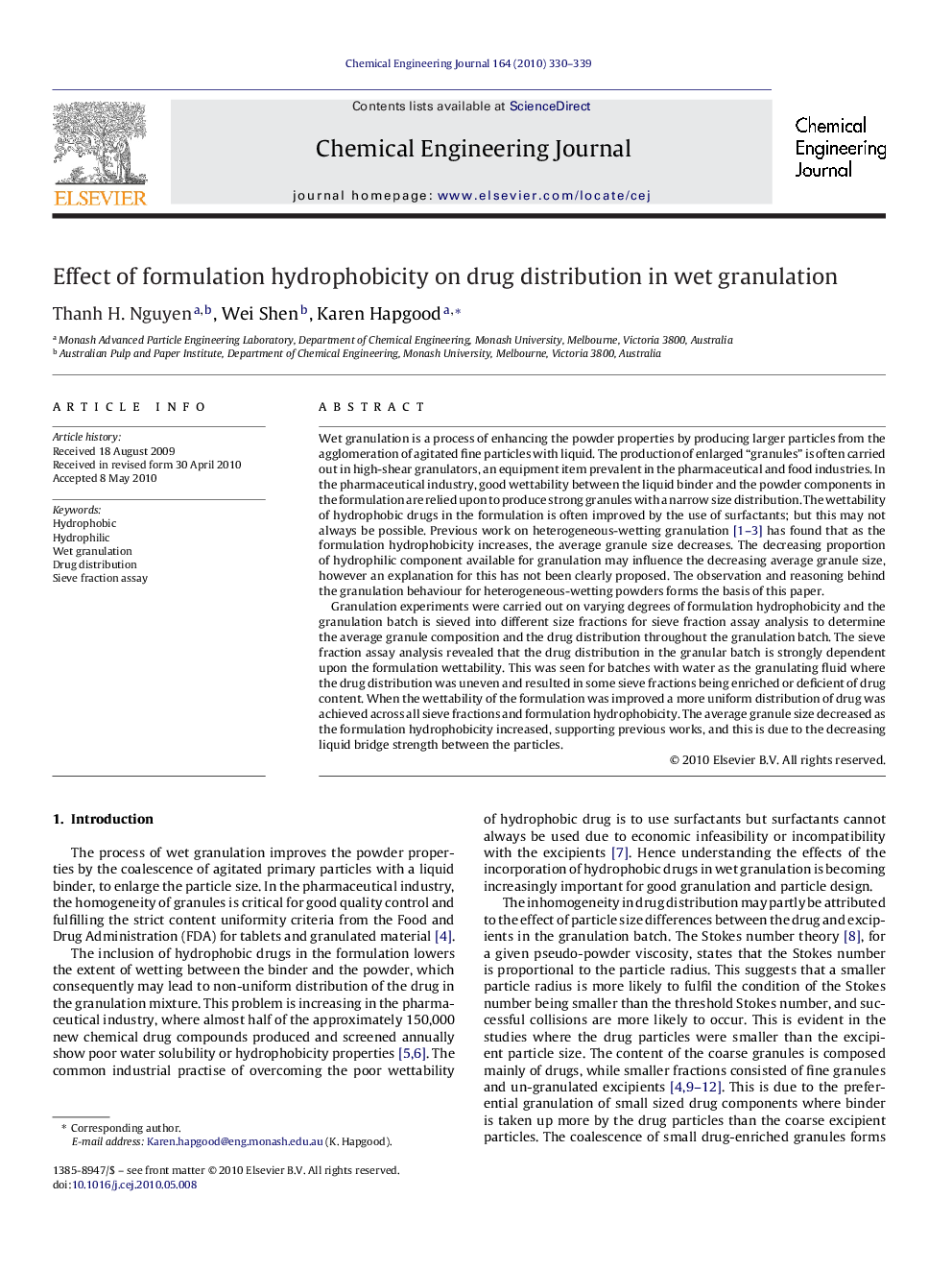| کد مقاله | کد نشریه | سال انتشار | مقاله انگلیسی | نسخه تمام متن |
|---|---|---|---|---|
| 151698 | 456478 | 2010 | 10 صفحه PDF | دانلود رایگان |

Wet granulation is a process of enhancing the powder properties by producing larger particles from the agglomeration of agitated fine particles with liquid. The production of enlarged “granules” is often carried out in high-shear granulators, an equipment item prevalent in the pharmaceutical and food industries. In the pharmaceutical industry, good wettability between the liquid binder and the powder components in the formulation are relied upon to produce strong granules with a narrow size distribution. The wettability of hydrophobic drugs in the formulation is often improved by the use of surfactants; but this may not always be possible. Previous work on heterogeneous-wetting granulation [1], [2] and [3] has found that as the formulation hydrophobicity increases, the average granule size decreases. The decreasing proportion of hydrophilic component available for granulation may influence the decreasing average granule size, however an explanation for this has not been clearly proposed. The observation and reasoning behind the granulation behaviour for heterogeneous-wetting powders forms the basis of this paper.Granulation experiments were carried out on varying degrees of formulation hydrophobicity and the granulation batch is sieved into different size fractions for sieve fraction assay analysis to determine the average granule composition and the drug distribution throughout the granulation batch. The sieve fraction assay analysis revealed that the drug distribution in the granular batch is strongly dependent upon the formulation wettability. This was seen for batches with water as the granulating fluid where the drug distribution was uneven and resulted in some sieve fractions being enriched or deficient of drug content. When the wettability of the formulation was improved a more uniform distribution of drug was achieved across all sieve fractions and formulation hydrophobicity. The average granule size decreased as the formulation hydrophobicity increased, supporting previous works, and this is due to the decreasing liquid bridge strength between the particles.
Journal: Chemical Engineering Journal - Volume 164, Issues 2–3, 1 November 2010, Pages 330–339